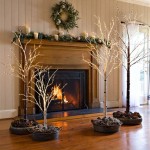Essential Aspects of Outdoor LED Colored Lighting
Outdoor LED colored lighting is a crucial aspect of modern architectural and landscapes design. It offers limitless possibilities for creating vibrant and dynamic outdoor environments, enhancing the aesthetic appeal of commercial buildings, residential properties, and public spaces alike. Understanding the essential aspects of outdoor LED colored lighting is key to designing and implementing effective and captivating lighting schemes.
In this article, we will delve into the core considerations for outdoor LED colored lighting, covering essential aspects such as color temperature, color rendering index, beam angle, and mounting options. By exploring these elements, you will gain a comprehensive understanding of how to select and utilize LED colored lighting for optimal results.
Color Temperature
Color temperature measures the warmth or coolness of light and is expressed in Kelvin (K). For outdoor lighting, color temperatures typically range from warm white (2700K-3000K), which creates a cozy and inviting ambiance, to cool white (4000K-6000K), which provides a brighter and more invigorating effect. Choosing the appropriate color temperature depends on the desired mood and atmosphere.
Color Rendering Index
Color rendering index (CRI) indicates how accurately a light source renders colors compared to natural sunlight. A higher CRI (90+) ensures that colors appear vibrant and true-to-life, while a lower CRI can result in distorted colors. Good color rendering is crucial for applications such as retail displays, architectural facades, and art installations.
Beam Angle
The beam angle determines the spread of light from the fixture. It is measured in degrees. Narrow beam angles (10-30 degrees) create focused beams of light, ideal for highlighting specific objects or areas. Medium beam angles (30-60 degrees) provide a wider distribution of light, suitable for general illumination. Wide beam angles (60 degrees and above) offer a broad spread of light, perfect for filling large spaces or creating ambient lighting.
Mounting Options
Outdoor LED colored lighting fixtures come in various mounting options to suit different installation needs. Surface-mounted fixtures are attached directly to the surface of a wall or ceiling. Recessed fixtures are installed within a cavity, creating a flush and seamless appearance. Pendant fixtures are suspended from the ceiling, providing downward-facing light. In-ground fixtures are designed for subterranean installation, emitting light from the ground level.
Conclusion
These essential aspects of outdoor LED colored lighting provide a solid foundation for creating captivating and effective outdoor lighting designs. By considering color temperature, color rendering index, beam angle, and mounting options, you can select the perfect lighting fixtures to complement the architecture, enhance the ambiance, and transform outdoor spaces into vibrant and inviting environments.

Your Guide To Outdoor Rgb Led Lighting Perspectives

Your Guide To Outdoor Rgb Led Lighting Perspectives

Express Yourself With Outdoor Color Changing Led Lighting

Color Changing Led Landscape Lights 12w Lighting Ip66 Waterproof Garden Pathway Walls Trees Outdoor Spotlights With Spike Stand Landscaping 4 Pack Com

Nashville Colored Rgb And Haven Outdoor Lighting

Outdoor Rgb Led Strip Lights Are Used To Bring Color Changing Accents A Patio

Outdoor Rgb Led Strip Lights Are Used To Bring Color Changing Accents A Patio

S Haven Lighting

Color Changing Lighting Services Outdoor Lights

18w Color Changing Rgb Led Landscape Spotlight 525 Lumens Remote Sold Separately Super Bright Leds







